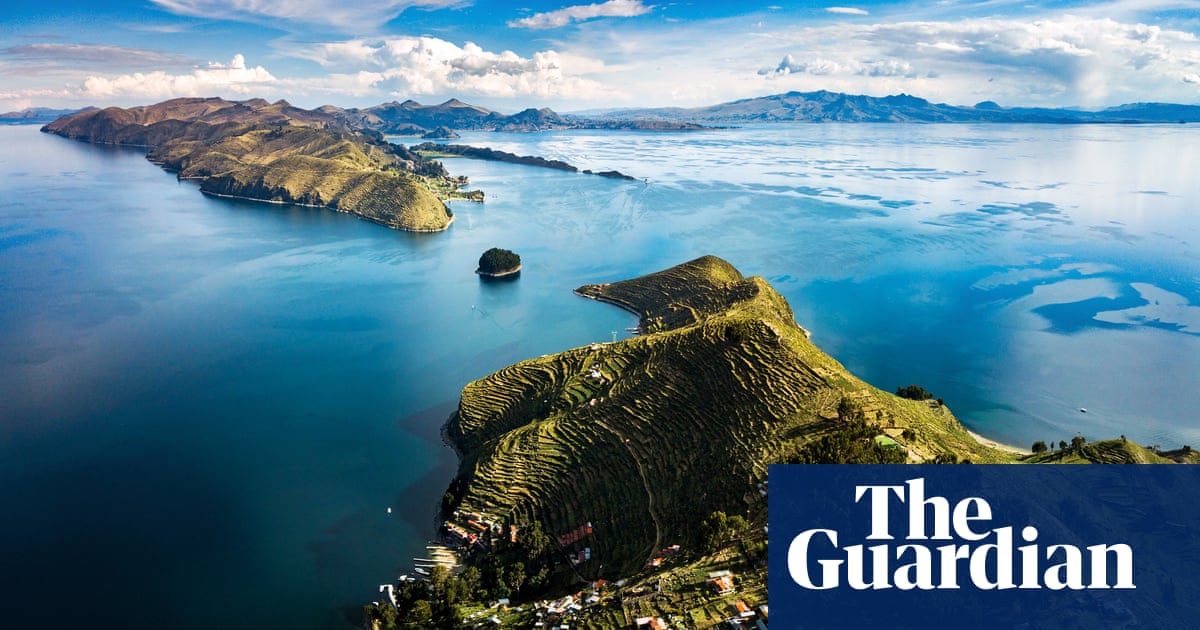When someone suggests I get up to greet the dawn, there is always a pause … but part of the joy of travel is that you find yourself saying yes, even to bad ideas. Pablo, my guide, has warned me: dawn can be incredible, do not miss it. So when the first gleam of pinkish light hits the east-facing curtain, I leap up.
From the terrace, there is a steep drop to the surface of the lake, which has the patina of hammered copper. A string of seagulls dances across. Seagulls at 4,000 metres in the mountains! Far away the snow-capped Bolivian peaks of Illampu rise from a rose-coloured shore and pierce the immaculate blue of the sky where the last stars are fading. Pablo appears, then Francisco, and we stand in silence, awestruck, until Francisco can no longer contain himself. “Come on. The fishing nets are waiting.”
Lake Titicaca is one of the world’s great sights. A vast inland sea improbably located in the sky. If it were in Europe, its surface would be above all the highest peaks in Switzerland and Austria, and its area would measure more than twice the size of all their lakes combined. As we follow Francisco down to his boat, Pablo is rolling out a series of astounding facts about his homeland – he was born on the larger island next to this one, Isla de Luna. “The first Inca king emerged from that water. There are seahorses living in there. There are lost cities. Look!” Reaching the shoreline, he stoops and picks up a stone. I make out a constellation of tiny fossilised sea shells.
I’m on the second stage of my journey from the heights of the Andes down to the mouth of the Amazon. From Cusco in Peru, I caught a bus to the busy city of Puno on the shores of Titicaca before crossing the border into Bolivia, then catching a boat taxi out to a pair of islands in the lake, the Sun and the Moon – where I am now. If Titicaca was never a serious contender as the source of the Amazon (it’s in the mountains to the north), it is the cultural heart for Indigenous people. The Bolivian end of the lake is much quieter, mostly catering for local holidaymakers and backpackers.
Francisco unties the boat and we motor out towards the sun. Titicaca is one of those locations that we usually hear about only when something is wrong. Before I saw it, I knew it was experiencing reduced water levels,…
Click Here to Read the Full Original Article at Travel | The Guardian…
